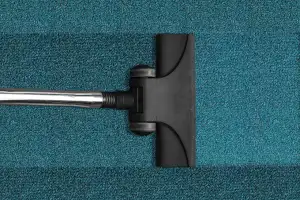Say Goodbye to Pesky Fruit Flies with this DIY Fruit Fly Trap for Your Home

Fruit flies are a common nuisance in many homes, especially during the warmer months. These tiny insects are attracted to ripe and decaying fruits, vegetables, and other organic matter. They can quickly multiply and infest your kitchen, making it difficult to enjoy a meal without their annoying presence. Fruit flies not only contaminate your food but can also spread bacteria and diseases. Dealing with these pesky pests can be frustrating, but there is a simple solution - a DIY fruit fly trap. By creating your own trap, you can effectively eliminate fruit flies from your home and enjoy a pest-free environment.
Benefits of using a DIY fruit fly trap
Using a DIY fruit fly trap offers several benefits over store-bought options. Firstly, it is cost-effective as you can create the trap using common household items. Secondly, DIY traps are environmentally friendly, as they do not involve the use of harmful chemicals. Additionally, homemade traps are easy to assemble and can be customized to suit your needs. By using a DIY fruit fly trap, you can effectively eliminate fruit flies in your home while saving money and reducing your environmental impact.
Step-by-step guide to creating a homemade fruit fly trap
Step 3: Step-by-step guide to creating a homemade fruit fly trap
Creating your own fruit fly trap is simple and cost-effective. Follow these easy steps to make your DIY fruit fly trap at home:
1. Take a small glass jar or container with a narrow opening, such as a mason jar or an empty jam jar.
2. Pour about half an inch of apple cider vinegar into the jar. The strong scent of vinegar will attract the fruit flies.
3. Add a few drops of dish soap to the vinegar. The soap will break the surface tension of the liquid, causing the flies to sink and drown.
4. Cover the top of the jar with plastic wrap and secure it tightly with a rubber band. Make sure to poke several small holes in the plastic wrap using a toothpick or fork.
5. Place your homemade fruit fly trap near areas where you've noticed fruit flies, such as near ripe fruits, garbage cans, or compost bins.
6. Leave the trap undisturbed for at least 24 hours to allow enough time for the fruit flies to be attracted and trapped.
Remember to check and empty your DIY fruit fly trap regularly to prevent any buildup of dead flies and maintain its effectiveness.
Essential ingredients and materials needed
To create a homemade fruit fly trap, you will need a few essential ingredients and materials. Here's what you'll need:
1. A small glass or jar: Choose a container with a narrow opening to prevent the flies from escaping once they are trapped.
2. Apple cider vinegar: Fruit flies are attracted to the sweet scent of apple cider vinegar, making it an effective bait for the trap.
3. Dish soap: Adding a few drops of dish soap to the vinegar will help break the surface tension and ensure that the flies drown in the liquid.
4. Plastic wrap or a rubber band: Covering the top of the jar with plastic wrap and securing it with a rubber band will create a barrier that prevents the flies from escaping.
With these simple ingredients and materials, you can easily create your own fruit fly trap at home.
Tips for effectively baiting the trap
1. Use ripe or overripe fruit as bait. Fruit flies are attracted to the sweet aroma of decaying fruits.
2. Mash the fruit slightly to release more scent and juice, making it more enticing for the fruit flies.
3. Add a few drops of dish soap to the mixture. This will break the surface tension of the liquid and prevent the flies from escaping once they enter.
4. Consider adding a splash of apple cider vinegar or red wine to enhance the attractiveness of the bait.
5. Place a small piece of plastic wrap over the top of the container and poke a few holes in it with a toothpick. This will allow the flies to enter but make it difficult for them to escape.
6. Change the bait regularly, at least every few days, to ensure its freshness and effectiveness in attracting fruit flies.
By following these tips, you can maximize your chances of successfully trapping those pesky fruit flies and keeping your home free from their annoyance.
Placement and maintenance of the fruit fly trap
Placement and maintenance of the fruit fly trap is crucial for its effectiveness. It is recommended to place the trap in areas where fruit flies are commonly seen, such as near garbage cans, fruit bowls, or compost bins. Make sure to keep it away from food preparation areas to avoid attracting more flies.
To maintain the trap, check it regularly and replace the bait as needed. Fruit flies are attracted to fresh fruits and vegetables, so make sure to use ripe produce as bait. Additionally, clean the trap regularly to prevent any buildup of dead flies or debris that may deter new flies from entering.
By following these placement and maintenance tips, you can ensure that your DIY fruit fly trap remains effective in eliminating pesky fruit flies from your home.
Natural alternatives to chemical-based traps
Natural alternatives to chemical-based traps are a great option for those who prefer a more eco-friendly approach. One effective natural alternative is using apple cider vinegar as bait. Fruit flies are attracted to the sweet smell of the vinegar, making it an ideal lure. Another option is creating a trap using overripe fruit. Simply place a piece of overripe fruit in a jar and cover it with plastic wrap, securing it with a rubber band. Poke small holes in the plastic wrap to allow the fruit flies to enter but make it difficult for them to escape. These natural alternatives not only help eliminate fruit flies, but they also avoid the use of harmful chemicals in your home.
In conclusion, DIY fruit fly traps are a simple and effective solution to the pesky fruit fly problem in your home. By using common household ingredients and materials, you can create a trap that is both cost-effective and environmentally friendly. These traps not only help to eliminate fruit flies, but also prevent them from breeding and multiplying.
The key to success with DIY fruit fly traps is to ensure that you use ripe fruits or other attractive bait, such as vinegar or wine. Regularly emptying and cleaning the trap will also help to maintain its effectiveness. Additionally, consider placing multiple traps in different areas of your home for maximum coverage.
For those who prefer natural alternatives, there are various options available such as using essential oils or herbs like basil or mint to repel fruit flies. These methods can be just as effective without the need for chemical-based traps.
Say goodbye to annoying fruit flies by creating your own DIY fruit fly trap today. With a little effort and the right ingredients, you can enjoy a fruit fly-free home and dine like a chef without any unwanted guests buzzing around.
Published: 21. 12. 2023
Category: Home



